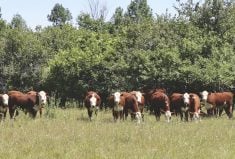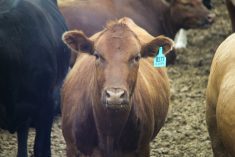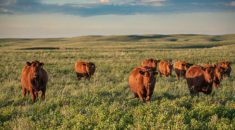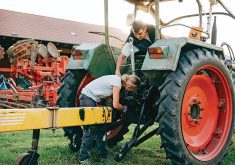Government needs to step up its support for the cattle sector — not just for ranchers, but to save the country’s most endangered habitat, say a coalition of conservation groups.
Very little of Canada’s grasslands remain and the cattle sector is essential to preserving what’s left, conservation organizations told the federal environment minister in a letter in April.
“A healthy beef industry is an important conservation partner, and with their support, enables us to conserve what’s left of Canada’s grasslands,” said the letter from groups such as Ducks Unlimited, Birds Canada and the Nature Conservancy of Canada.
Read Also

Farming Smarter receives financial boost from Alberta government for potato research
Farming Smarter near Lethbridge got a boost to its research equipment, thanks to the Alberta government’s increase in funding for research associations.
“As conservationists, we are not oblivious to the individual financial realities of farmers and ranchers. The Canadian beef industry must be able to compete economically on the agricultural landscape to conserve and restore grassland habitats.”
Government needs to realize that the cattle sector’s economic crisis caused by the pandemic can lead to an environmental crisis, said Karla Guyn, chief executive officer of Ducks Canada.
“We saw the situation that the cattle industry was in with COVID, and with some of the packing plants closing down, and the repercussions from that, and the implications to some of the cow-calf producers,” said Guyn.
“It was important to us to come out and make a statement as the coalition of conservation groups to the federal government, what the impacts could potentially be to grassland conservation.”

Grasslands are critical habitat to many species of birds, said Birds Canada president Steven Price, another signatory to the letter.
“No other group has been declining more quickly than grassland birds,” said Price. “They are really suffering from lack of protected areas and the rapid rate of conversion to cropland.”
Bird species in danger include burrowing owls, sage grouse, Sprague’s pipit, Baird’s sparrow and the chestnut-collared longspur.
“In conservation, we also need protected areas. The situation in the Prairies is that we don’t have large protected areas,” he said.
Grasslands filter water, help prevent flooding and drought, and store and sequester carbon, the groups noted. More than 60 different species at risk depend on Canada’s grasslands.
“Temperate grasslands are one of the most endangered terrestrial ecosystems on the planet,” said Kevin Teneycke, regional vice-president of the Nature Conservancy of Canada in Manitoba.
“And in Canada, over 70 per cent of our grasslands have already been lost and they continue to disappear at a steady rate.”
According to Nature Canada, less than one per cent of the 137,000 square kilometres of the remaining grasslands in Alberta and Saskatchewan are protected.
“In 50 years, these unique habitats may be gone,” the organization warned last year.
The looming threat
The rate of loss will be hastened by the pandemic if it forces cattle producers out of business, the conservation groups say.
You only have to look at what happened during the BSE crisis, Guyn said during a recent webinar hosted by the Canadian Roundtable for Sustainable Beef.
“For many, ranching no longer provided a profitable and sustainable way of preserving their land,” she said.
“And as a result, Canada lost nearly 27,000 ranching operations and with that, nearly five million acres of grasslands.”
Ranchers manage 44 million acres of grasslands, Canadian Cattlemen’s Association president Bob Lowe noted during the webinar.

But while that sounds like a large number, the area covered by temperate grasslands on the Prairies has “declined by 57 per cent since the 1970s, and birds that are dependent on grasslands have declined by 87 per cent,” said Teneycke.
“When we lose beef producers, we lose grasslands and we lose them forever.”
Other than an acknowledgment that their April letter has been received, the conservation groups haven’t received a response from the federal government.
But if there isn’t enough financial support and large numbers of producers exit the cattle sector, the environmental fallout is predictable, Guyn said during the webinar.
“Looking back to BSE, we never expected how hard economic times for beef producers would transcend into habitat loss,” she said. “Today, we have a far better understanding of the consequences and we have a far better chance to try to avoid them.
“There is so much we don’t know about COVID-19, but the decisions we make today will have implications for the beef industry and for conservation for years to come.”















